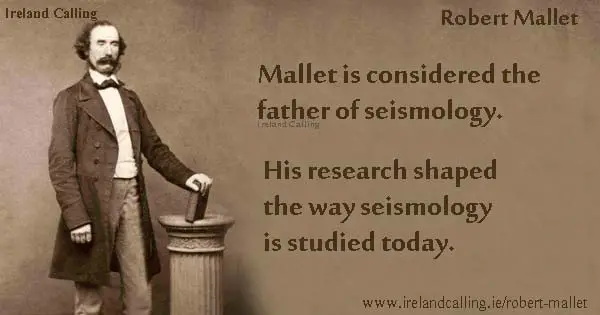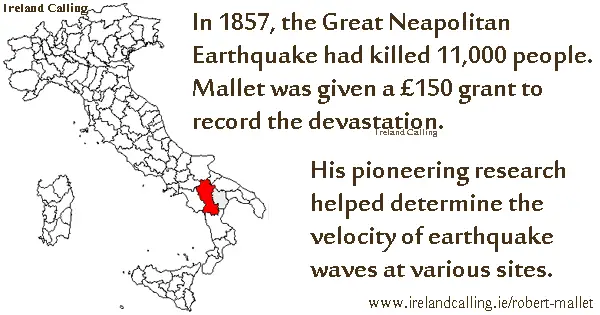Irish geophysicist Robert Mallet is often referred to as the father of seismology thanks to his pioneering work on earthquakes.
Mallet was born in Dublin in 1810 and was something of a child prodigy. He enrolled at Trinity College Dublin at the age of 16 and graduated in science and maths aged just 20.
Mallet worked for his father’s business
After he graduated he helped to turn his father’s iron foundry business into one of the biggest engineering companies Ireland. They supplied ironwork for bridges, railway companies and Trinity College.

While he clearly had a flair for business, his passion was science and he spent his life studying geology. He was a member of the Royal Geological Society of Ireland, and the British Association for the Advancement of Science. The latter financed a lot of his research in seismology.
Mallet published several papers
Throughout his career, Mallet published a number of important papers about natural disasters such as earthquakes and volcanoes. His 1946 paper The Dynamics of earthquakes set the foundations for how seismology is studied today.
In the 1850s, Mallet and his son performed experiments on sand and solid rock to determine the speed of seismic propagation. They exploded dynamite and measured the velocity of elastic waves on the surface. He published his paper The Earthquake Catalogue of the British Association in 1858.
The Great Neapolitan Earthquake
There was a disaster in Padula, Italy in 1857. The Great Neapolitan Earthquake had killed 11,000 people. Mallet was given a £150 grant to go and record the devastation. He studied the cracks in buildings, collapsed walls and overturned objects.
He was able to estimate the origin of the wave. His paper; Report on the Great Neapolitan Earthquake of 1857 was presented to the Royal Society of London.
In 1862, he published a second report, Great Neapolitan Earthquake of 1857: The First Principles of Observational Seismology. It contained evidence that the earthquake had originated 8-9 miles beneath the ground.
He created formulae to calculate the velocity needed to overturn various objects. This helped him determine the velocity of earthquake waves at various sites.
Volcanic eruption
His report Volcanic Energy: an Attempt to develop its True Origin and Cosmical Relation explained that when the crust of the earth is disturbed by crushing or contortions, it could generate enough heat for a volcanic eruption of steam or lava.
These papers shaped the way seismology is studied today. Mallet is now considered the father of seismology, he even coined the word himself. He died in 1881 aged 71.
More popular articles and videos
The real life mystery of what Maureen O’Hara whispered to make John Wayne look so shocked
Matt Damon winning hearts and minds with charm assault on Ireland
Action hero Tom Cruise was once attacked by an old man in a Kerry pub
Liam Neeson speaks about his late wife in emotional interview
Dating site explains why Irish men make wonderful husband material
Billy Connolly says public should ignore politicians and listen to comedians
Take a look inside Hollywood star Saoirse Ronan’s stunning Irish home

